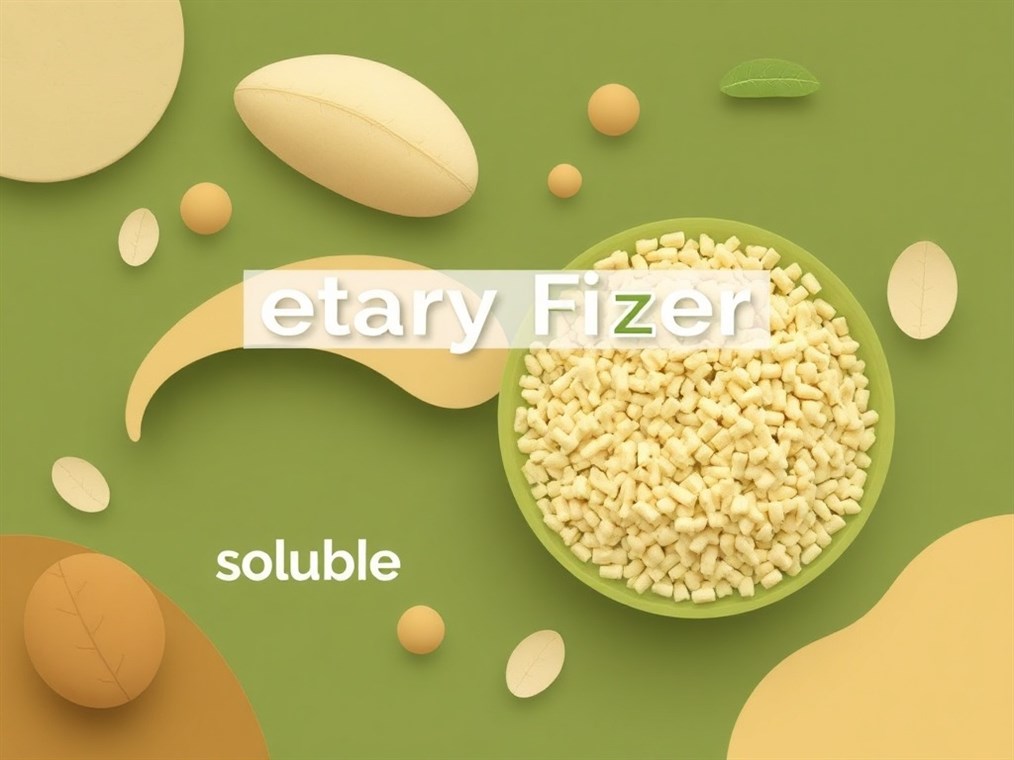Fiber: Your Gut’s Best Friend – A Simple Guide to Soluble and Insoluble Types
Okay, let’s talk fiber. It’s one of those things we all know we should be eating, but do we really understand why? Think of fiber as the unsung hero of your diet – it’s not glamorous, but it’s absolutely essential for keeping things running smoothly, if you catch my drift. But here’s the thing: not all fiber is created equal. We’ve got two main types – soluble and insoluble – and getting a good mix of both is where the magic happens.
So, what is fiber, anyway? Simply put, it’s a type of carbohydrate that your body can’t actually digest. Instead of being broken down and absorbed like sugars and starches, it travels through your system pretty much intact. Sounds useless, right? Wrong! That’s exactly what makes it so beneficial.
Let’s start with soluble fiber. Imagine it as a sponge that soaks up water in your gut, forming a kind of gel. This gel slows things down, which is a good thing!
Here’s why soluble fiber is your friend:
- Bye-Bye, Bad Cholesterol: Soluble fiber can latch onto cholesterol in your digestive system, preventing it from getting into your bloodstream. Think of it as a cholesterol bouncer!
- Blood Sugar Control: By slowing down how quickly your body absorbs sugar, soluble fiber helps keep your blood sugar levels nice and steady. This is especially important if you have diabetes or are at risk.
- Happy Gut, Happy You: Soluble fiber feeds the good bacteria in your gut, helping them thrive. And a happy gut means a stronger immune system, less inflammation, and just an overall better you. Trust me, your gut will thank you.
- Weight Management: Ever notice how some foods just make you feel full for longer? Soluble fiber is a big part of that. It can help you feel satisfied, potentially preventing you from overeating.
- Tummy Troubles? Solved: Whether you’re dealing with constipation or diarrhea, soluble fiber, like psyllium, can help get things back on track.
Where can you find this magical soluble fiber?
Think oats, peas, beans (black beans, lima beans), apples, bananas, avocados, citrus fruits, carrots, barley, psyllium, Brussels sprouts, flax seeds, and lentils. See? Plenty of delicious options!
Now, let’s move on to insoluble fiber. This is the stuff that doesn’t dissolve in water. Instead, it adds bulk to your stool and helps move waste through your digestive system at a faster pace.
Why is insoluble fiber important?
- Regularity is Key: Insoluble fiber is your go-to for preventing constipation. It adds bulk, making it easier to, well, you know… go.
- Bowel Health Booster: By keeping things moving, insoluble fiber can help reduce your risk of developing hemorrhoids and diverticulitis.
- Insulin Sensitivity: It may improve insulin sensitivity in people with diabetes.
Time to stock up on these insoluble fiber sources:
Reach for whole-wheat flour, wheat bran, nuts, seeds, beans, vegetables like cauliflower, green beans, and potatoes, fruits with skin (apples, pears), popcorn, and leafy greens.
So, how much fiber do you actually need?
The general recommendation is:
- Women under 50: Aim for around 25 grams per day.
- Men under 50: Shoot for about 38 grams per day.
- Women over 50: 21 grams is a good target.
- Men over 50: Try to get around 30 grams.
Keep in mind that the FDA recommends 28 grams of fiber each day based on a 2,000-calorie diet. Sadly, most of us aren’t even close to hitting those numbers.
Want to boost your fiber intake? Here are a few simple tips:
- Go for Whole Grains: Make sure at least half of your grains are whole grains.
- Load Up on Fruits and Veggies: Aim for at least five servings a day.
- Beans are Your Friends: Add them to soups, salads, and main dishes.
- Snack Smart: Choose nuts, seeds, and whole-grain crackers.
- Read Labels: Look for foods with at least 2 grams of fiber per serving.
- Take it Slow: Increase your fiber gradually to avoid tummy troubles.
- Hydrate, Hydrate, Hydrate: Fiber needs water to do its job properly.
A Word of Caution About Insoluble Fiber
It’s worth noting that too much insoluble fiber can lead to some health problems such as diarrhea, bloating, excess reduction in blood glucose levels, pain in the lower abdomen, vomiting, and fatigue.
The Bottom Line
Both soluble and insoluble fiber are essential for a healthy gut and a happy you. By incorporating a variety of fiber-rich foods into your diet, you’ll be well on your way to feeling your best. Just remember to increase your intake gradually and drink plenty of water. Your gut will thank you for it!

